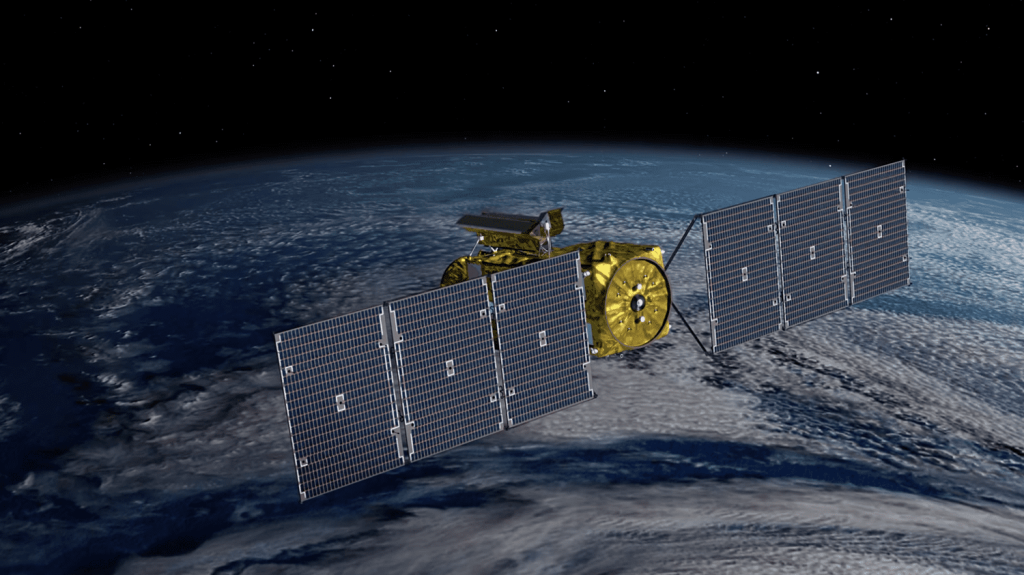
Swot, the satellite that will revolutionize our knowledge of water on Earth
This French and American-made instrument, which will enter orbit on Thursday, will increase the definition of images tenfold and provide a large amount of new data for the study of lakes, rivers and oceans.
opens a A new field of possibilities. Swot satellite (for Surface water and ocean topography, or “topography of the surface of the water and the ocean”) will allow significant progress in monitoring water on Earth. This tech gem is set to launch on Thursday, December 15th. He will be on board the SpaceX Falcon 9 rocket, which will take off from Vandenberg Air Force Base in California (USA).
The result of a collaboration between the French space agency (Cnes) and the US space agency (NASA), this mission promises to upset our current knowledge. Swot, which will rotate at 890 Height sleeve, equipped with a revolutionary tool : a “wideband interferometer” intended for measuring the height of water. Called “KaRIn,” this instrument has two radar antennas located about ten meters apart, as shown in this illustration image posted by NASA.
The signal received by each of the two antennas is slightly different, and produced two-dimensional image. consequences The measurement is more accurate than what can be obtained currently. Transitioning from one to two dimensions and having height scales with less flat representations are some of the main highlights of Swot. “Swot alone will provide as much data as six traditional altimeters.”Aurélien Ponte, researcher in space oceanography at Ifremer, explains, In a press release.
For Karen St. Germain, director of Earth Observation at NASA, “We will have a resolution 10 times greater than what current ocean altimetry techniques produce.”. Guillaume Charria, research physicist-oceanologist at Ifremer, sums up this improvement with franceinfo with this image: “It’s like going from binoculars to a telescope.”.
In search of small currents and eddies
With this new, high-resolution satellite, scientists will be able to capture images “immediately” Phenomena that sometimes reach a few centimeters in height, such as coastal currents or columns of rivers flowing into the ocean.
The resolution of the current instruments does not make it possible to observe phenomena less than 150 how many width This is enough to study the enormous ocean current that is the Gulf Stream or to highlight the so-called warm current El Nino. With Swot, scientists will somehow be able to zoom in even further and observe seas and oceans on previously unattainable scales.
“A more detailed and accurate view could help us better understand what the current is.”notes Guillaume Charria, who is also a member of the Swot science team. “For example, we’ve already seen that large ocean currents are not just linear but very turbulent water flows. We’ll go one step further.” With this new satellite.
>> The must-read article to understand why oceans matter in the fight against climate change
Local currents and eddies, a few tens of kilometers wide, have not yet been investigated. However, it has a significant effect on temperature. Water At the surface, heat transfer, as well as water absorption of carbon dioxide (CO2, the main greenhouse gas) present in the atmosphere. Any new knowledge to better describe these phenomena is important because the climate machine is strongly linked to the oceans, the latter acting as a giant thermostat.
Guillaume Charya highlights the possibility of a spatial idea of currents, which could be happening at the moment “Very good at measuring but in a subtle way”. This new knowledge may have implications for ocean forecasts. Short-range for navigation, or long-range for climate modeling.
Lakes and rivers are witnesses to climate change
Swot will not only care about the seas and oceans. Lakes, streams and rivers are also on its list. The power of the instruments will make it possible to consider continental waters that have not yet been observed, significantly increasing the volume of information. While we currently have data on a few thousand lakes around the world, thanks to Swot, we will have at least two million lakes, according to NASA (in English).
Like polar ice, lakes record climate history. They can attest to ongoing climate change if we document rising water temperatures, declining ice sheets or even differences in water levels. Over the past century, the surface waters of the Great Lakes in the United States have warmed by 3.5 degrees Celsius, Cnes explains.
In rivers and rivers, we will have more accurate estimates of flowsSharya clouds notes. In France, rivers are well monitored with on-site instruments, but this is not the case everywhere in the world.”mentions the researcher.
Finally, all knowledge of the Earth’s water cycle, from precipitation to evaporation, including pumping for cities and irrigating crops, must be enriched. Ultimately, all of the data collected by Swot will be linked to other satellite observations to improve management of our planet’s water resources.

“Incurable web evangelist. Hipster-friendly gamer. Award-winning entrepreneur. Falls down a lot.”
